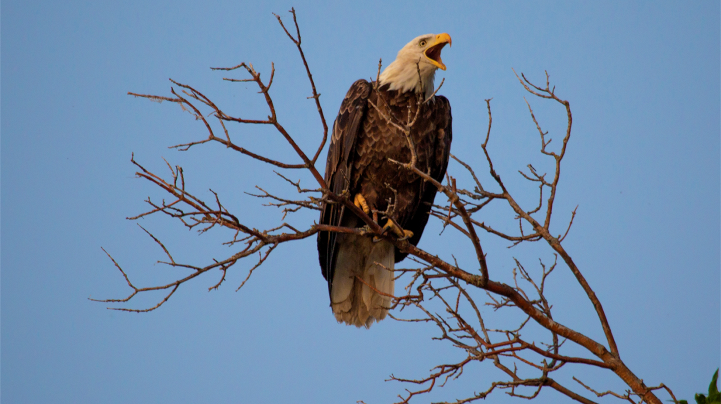Haliaeetus leucocephalus

The Bald Eagle has come to be a symbol of freedom and wilderness, seemingly representing all wildlife and wild places with its distinctive and stately appearance that is recognizable to almost everyone.
Habitat
Look for Bald Eagles across many parts of North America. Some will stay in certain areas year-round, such as along the coasts or along major southern rivers. Others migrate each year to the interior parts of
Alaska, Canada, and some northern states, and then head south in fall, sometimes as far as Mexico, as the rivers and lakes they use in the north freeze over.
You can find Bald Eagles at Oak Hammock Marsh!
Food
Bald Eagles feed mainly on fish, but they will eat other birds, mammals, reptiles, amphibians, and even invertebrates, like crabs. Carrion, such as road kill, is also eaten.
Behaviour
While their white head and brown body are well-known, Bald Eagles are brown overall for the first five years of their lives. They mate for life, raising new chicks every year. Nests are built high up on the tops of trees with sticks and twigs and can be very large, growing larger every year as pairs return. One to three eggs are laid and take just over one month to hatch.
You may see them soaring high above in solitude or perched in trees in large groups at communal feeding sites. Able hunters of their own, they will steal food from other birds of prey too.
Conservation
Human action caused Bald Eagle numbers to drop to dangerous lows prior to the 1980s. This included
direct trapping, shooting, and poisoning, but also indirect problems from pesticide use, especially DDT. Following the banning of DDT, the introduction of new laws, and an increase in overall respect from
people, the Bald Eagle population has rebounded and is a conservation success story.

